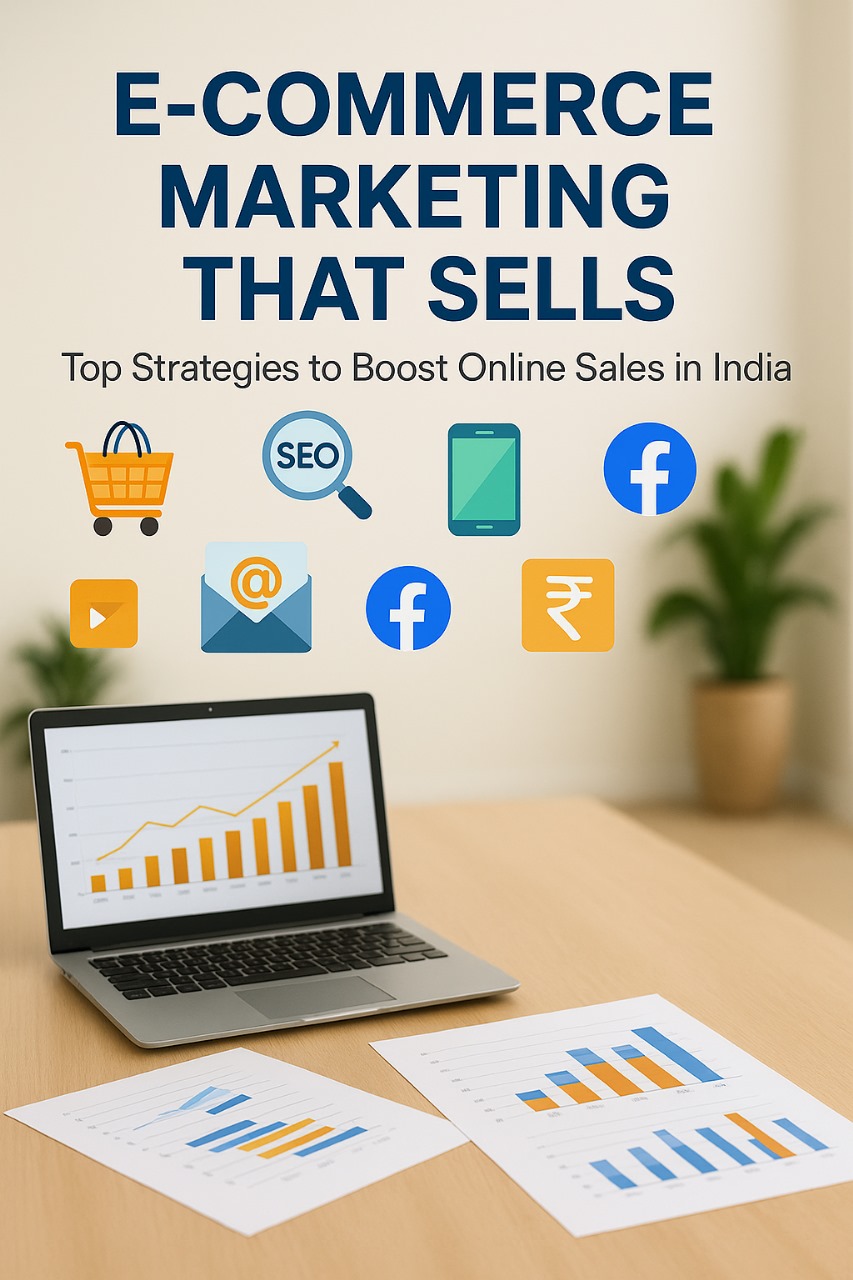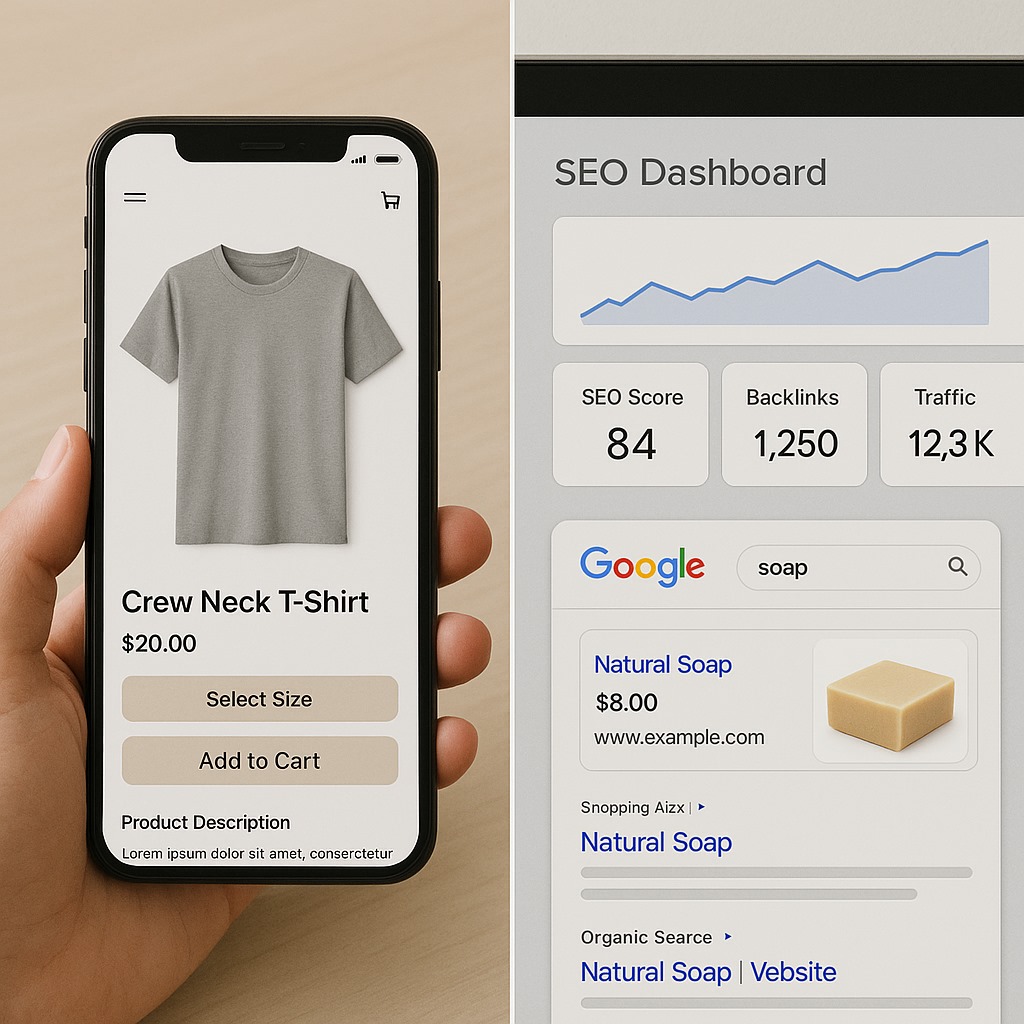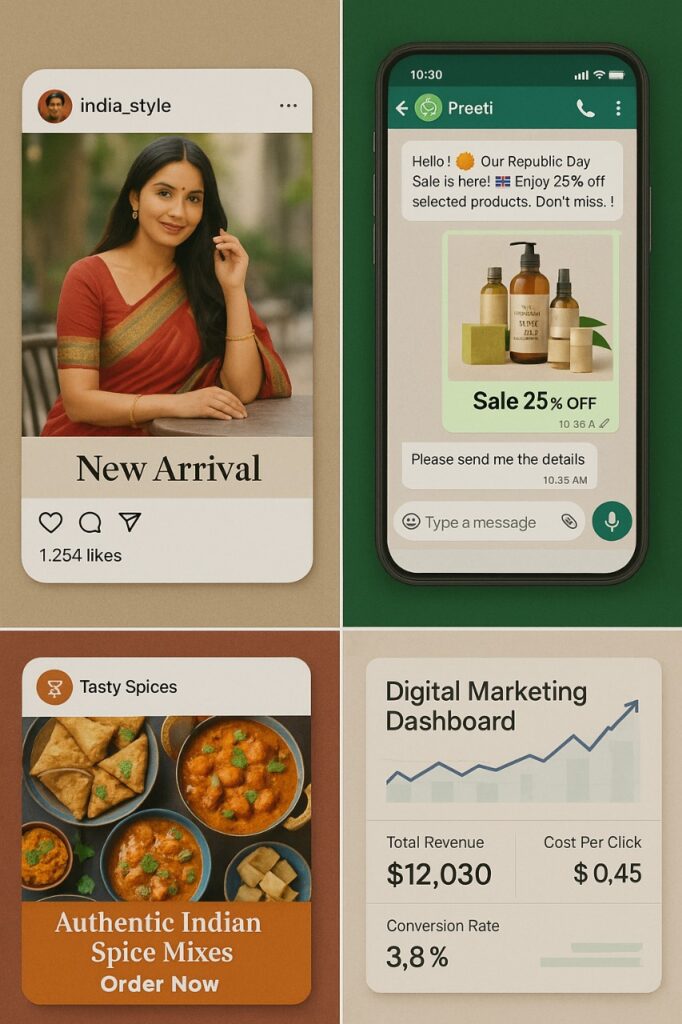
Social media marketing for online stores is now a game-changer in India’s booming e-commerce industry. With online shopping becoming the new norm, it’s the perfect opportunity for businesses to set up and scale their online stores. However, launching a store isn’t just about building a website — it’s about using smart strategies to attract visitors and turn them into loyal customers.
This blog explores practical, result-driven e-commerce marketing strategies to help Indian businesses grow their online sales. From SEO and social media marketing for online stores to paid ads and email campaigns, we’ll cover everything you need to boost visibility, drive traffic, and increase conversions in the digital shopping space.
1. Design a User-Friendly Website

Your website is the store; if it is too clumsy, slow, and difficult to operate, it will stampede out. So let’s make sure: Fast load speed (more so on mobile). It is mobile-friendly (most Indian users considering shopping businesses will run on mobile phones). Easy navigation: products must come easy to find. Use clear categories, a search box, and filters. Map out a simple and smooth checkout experience. Pro-level Tip: If you wish for the easiest way to run your online store, consider a ready-made store on Shopify, WooCommerce, or Wix.
2. SEO to Make Your Product Visible on Google

SEO makes visibility upon related Web searches. If I sell handmade soaps, I want my site to pop up when someone types in “natural soap in India,” for example. What to do: Include keywords in product titles and descriptions. Write blogs like “Benefits Of Natural Soap” and other niche-related topics. Use Alt tags on images. Hunt sites for backlinks. Tools for assistance: Google Keyword Planner, UBERSuggest, Ahrefs.
3. Much More Advertising Through Social Media: Measurement of Audience Times
The Indian audience is also spending most of their time on social networking like Instagram, Facebook, and Youtube. Advertise your product to connect with the target market through such platforms. Social Media Marketing: While posting on your social media, make sure to upload high-quality pictures/videos. Reels including product usage or behind-the-scenes of product development. Collaborate with influencers (micro-influencer campaign is a good option to go for a budget-friendly promotion). Run a contest or give away a gift. Make sure to use relevant Hashtags like #MadeInIndia #EcommerceIndia.
4. Start Paid Advertising (PPC)
Sometimes, organic outreach is not so powerful. Then, there can be a thrilling result from PPC on Google, Facebook, and Instagram. Where to advertise: Google Search Ads: If someone searches for the product, they will see your advertisement. Google Shopping Ads: Advertised product images and prices are shown directly on search. Facebook/Instagram: Target the users based on age, location, interests, and behaviors. Start small and track the performance of your ads.
5. Customer Retaining through Email Marketing
Most of the e-commerce businesses have been completely focusing on new customers, however, to sell to the existing customers is way easier. That is why email marketing has become a good way to keep in touch. Send emails like: Welcoming emails to new signup. Confirming the order, payment, and shipping alert. Following up with product recommendations. Informing discounts or special offers. Sending alerts to abandoned carts. Pro-level Tip: Tools such as Mailchimp, ConvertKit, or Klaviyo can help get this to excel.
6. Cash On Delivery and Simple Return-Good Against Trust Issues
Indeed, that sizable population in India is always bound by Cash On Delivery. If you do not have it, your store will statistically suffer from drawing a lot of potential customers in. Also, have a transparent return and refund policy because this can bolster shopper confidence. Buyers feel easier to relate with dealers who have the assurance that they will get their money back in case something goes awry from the store.
7. WhatsApp Marketing
WhatsApp in India has become one of the most important apps to be used. It’s a good way for companies to: Send the customers order updates. Share the latest offers and deals. Instantly respond to customer queries. Send catalogs with images and prices of products. Always take customer prior consent before sending any marketing messages.
8. Create Trust With Proofs And Testimonies
What people say is what people believe these days. Show reviews next to your product on the page. You can activate your customers to write the reviews after the purchase. You can also give them discounts or incentives for writing reviews. Consider including star ratings and photos of users if possible.
9. Run Festivals and Seasonal Campaigns
In India, festivals are prevalent. Just take some of these times, such as Diwali, Holi, Raksha Bandhan, Eid, and Christmas-the best times to showcase one’s offer or discounted time-limited offer. Start festive collections. Countdown sales. Bundle deal opportunities and gift sets. Festivals are shopping events, thus maximizing this opportunity to cash in on festival shoppers for seasonal sales.
10. Retargeting: Taking Visitors Back
A user may land on a website, look through the products, and leave without buying anything. Retargeting works wonders here, bringing the user back. Facebook pixel and Google Retargeting allows showing advertisements to the audience that visited your website before. It reminds them of your brand and raises the chances of conversion.
11. Free Shipping Or At Least Shipping Free Over Some Amount
Free shipping works as a major incentive in India. A significant number of users cart out only to abandon it due to high shipping charges. You can also offer: Free shipping on all orders. Free shipping above ₹499 or ₹999. Free shipping for prepaid orders. Experiment with different options, and see which option resonates most with your audience.
12. Analyze and Improve
Keep monitoring your own performance using the following tools: Google Analytics – Monitor the traffic to the website and the behavior of users. Meta Ads Manager – Performance of ads on Facebook and Instagram. Google Ads Dashboard – For performance of ads on Google. There should be a constant check for positive and negative points among the above. Always make sure that you are updating your website/ads/content.



